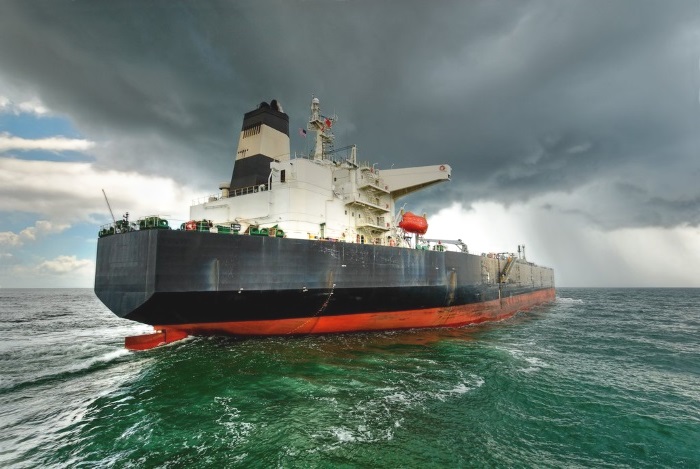Shipping’s emissions – measured on a tank-to-wake basis – are likely to contribute 2.1% of global carbon dioxide emissions this year, according to recent analysis by Clarkson Research. This is down from last year’s figure of 2.3% largely as a result of slower speeds, with container ships in particular sailing at all-time slow speeds over the first quarter of this year.
The largest single contributor is the power generation sector, according to the Clarkson analysis, with 39%. In transport, shipping is a significant source of carbon emissions, but it fares well against other forms of transport in view of its essential role in the world economy. Road freight and passenger traffic account for 16.2%. Aviation is about the same as shipping, and rail is the top performer with just 0.2%.
Related: Push for IMO to set ‘ambitious’ climate goals for shipping
Shipping’s performance over the last decade-and-a-half has been impressive. Carbon dioxide emissions were down by about 14% between 2009 and 2019, according to Clarkson estimates, even as the industry shipped about 40% more cargo by the end of that period. In contrast, road emissions climbed by about 20% and air transport by around 25%. Shipping’s carbon transportation efficiency also compares well – rail is three times more carbon intensive, and trucks more than ten times.
However, the sector’s long-term pathway is far less uncertain than other transport modes, Clarkson pointed out.
Related: Price the biggest challenge in adoption of alternative fuels: Eaglestar
For road and rail, electrification adoption and government targets are in place – 14% of 2022 car sales were for electric vehicles.
Meanwhile, as much as 65% of net zero 2050 targets in aviation are likely to be met by ‘drop-in’ sustainable biofuels, according to the sector’s trade body, IATA. A further 13% will come from new technologies such as hydrogen and electricity. Another 19% will be met by offsets and carbon capture with the remaining balance from operational and infrastructure efficiencies.
In shipping, the backdrop is more complex, with initiatives including slow-steaming, energy-saving retrofits, routeing efficiencies, various fuel options which are still under development, and fleet renewal. Shipping faces still faces many more challenges than other transport sectors.
Source: SeaTrade Maritime News






